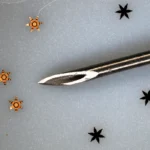Cells flatten themselves to better move through mucus
“Ruffle” appendages on certain cells help them sense the viscosity of fluids around them, allowing them to transform their shape to better move around
A team led by Johns Hopkins University mechanical engineer Yun Chen figured out how and why human cells move much faster through thick mucus than thinner varieties. The findings could inform and inspire new treatment for mucus-related diseases, including chronic lung diseases and mucinous cancer—the deadliest subtype for lung and ovarian cancer.
Above video: A pair of human kidney cells move through fluid. When the fluid changes from the viscosity of water to that of honey, the cells immediately flatten to become quicker and more efficient.
People sick with certain diseases, including asthma and COVID-19, secrete mucus that is 2,000 times thicker than normal. But cells have fin-like “ruffles” that help them sense viscosity and know when to change shape to power through the thickest mucus, the researchers found.
Previously, the ruffles were considered useless appendages, but the engineers discovered that the ruffles propel cells through thick mucus, helping them to swim faster in the thick stuff than more watery fluids.
Their findings were published today in Nature Physics.
The research team included members from the University of Toronto and Vanderbilt University.
This research project is supported by Air Force Office of Scientific Research (AFOSR), National Institutes of Health (NIH), National Science Foudation (NSF), and Natural Sciences and Engineering Research Council of Canada.
Story by Jill Rosen and was first published on the Hub.
Latest Posts
-
 Johns Hopkins Postdoc Named in Forbes `30 Under 30′ List
December 8, 2025
Johns Hopkins Postdoc Named in Forbes `30 Under 30′ List
December 8, 2025
-
 Micro Grippers: David Gracias Builds Micromachines That Fold, Stick, Swim, and Sense—All Inside the Human Body.
November 20, 2025
Micro Grippers: David Gracias Builds Micromachines That Fold, Stick, Swim, and Sense—All Inside the Human Body.
November 20, 2025
-
 A bold new approach to autoimmune diseases
November 19, 2025
A bold new approach to autoimmune diseases
November 19, 2025


